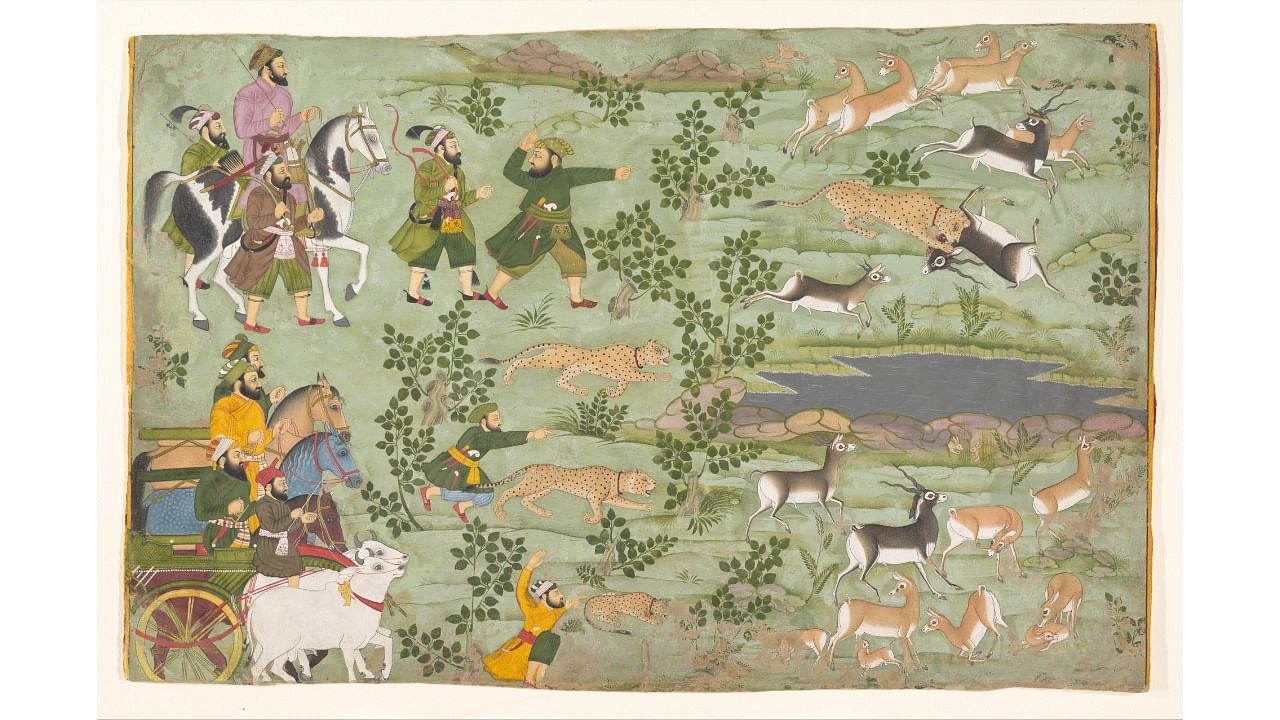
For a country with continuous cultural history dating to 10,000 years, it's a pity that almost always, it's a random Google search that people must resort to for any information on this expansive topic. Often, this search yields authentic information only after exhaustive trawling of the web.
To address this serious lacuna in understanding the humungous topic of Indian art, the Bengaluru-based Museum of Art and Photography's MAP Academy has recently launched a digital encyclopaedia https://
Called the MAP Academy Encyclopaedia of Art (MAEA), it is the first such endeavour on this scale in the country. However, there have been sporadic, though not as comprehensive, attempts at collating information on this topic with an epochal swathe.
"The MAP Academy team was established in January 2020 to further and foster interest in and understanding of the histories of art from the Indian subcontinent," said Nathaniel Gaskell, founder and director of the MAP Academy to DH. "The MAEA manifests this vision for a comprehensive, detailed, inclusive, and accessible resource for researchers, scholars, academicians, and the general curious reader."
According to Gaskell, the first iteration of MAEA comprises 2,000 individual articles and glossaries, which took nearly two years to complete.
"Over two years, about 25 early-career researchers and editors from across India and the world worked remotely on the MAEA. They wrote, edited, and peer-reviewed content that covers everything from artists' biographies, important artworks, craft traditions, explanations of themes, movements, monuments and cultural sites, and contemporary debates involving appropriation, surveillance, digital intervention and exchange," said Gaskell.
Gaskell is an intrepid researcher who co-authored (with Diva Gujral) the first in-depth book on photography in the country, titled Photography in India: A Visual History from the 1850s to the Present (2019).
The basic unit of MAEA is an "entry," an edited and cited piece of text on a single subject, ranging in length from 200-to 1,000 words. All the content falls into distinct categories—Pre-Modern Art, Modern and Contemporary Art, Textiles, Photography, Architecture, and Performing Art and Living Traditions.
An important aspect of MAEA is its accessibility. Gaskell shares that the MAP Academy believes "India's rich traditions of art deserve more sustained engagement and should also be made accessible to everyone."
Accessibility is also extended through short online courses, free of cost. Some topics of these courses include textiles of the Indian subcontinent, Modern and Contemporary Indian Art, and History of Photography in India, among others.
Of particular interest is the review process that the MAEA has undertaken for each entry to maintain uniformity, clarity, and veracity of the information being shared for public consumption. Gaskell shares that each entry undergoes three editorial checks after it is written and formatted, and then the lead editor gives a final check. It is then reviewed by the director and subsequently by members of the Academic Review Panel (ARP), comprising scholars, writers, historians and art practitioners.
"The ARP's guidance is important, as it provides institutional and scholarly grounding for our team's work, drawing from the extensive experience and perspectives each member of the panel brings."
As the core nature of MAP Academy's work is educative and informational, it has an active outreach programme in the pipeline.
"The key to our mission is to work directly with schools and educational institutions to increase the number of students who have access to knowledge around art histories," said Gaskell. "We are in the early stages of this journey and are actively developing academic partnerships."
Eventually, the academy hopes to rope in audiences that are not online yet, through translations in regional languages in print media.
(The writer is a New Delhi-based journalist, editor and arts consultant)